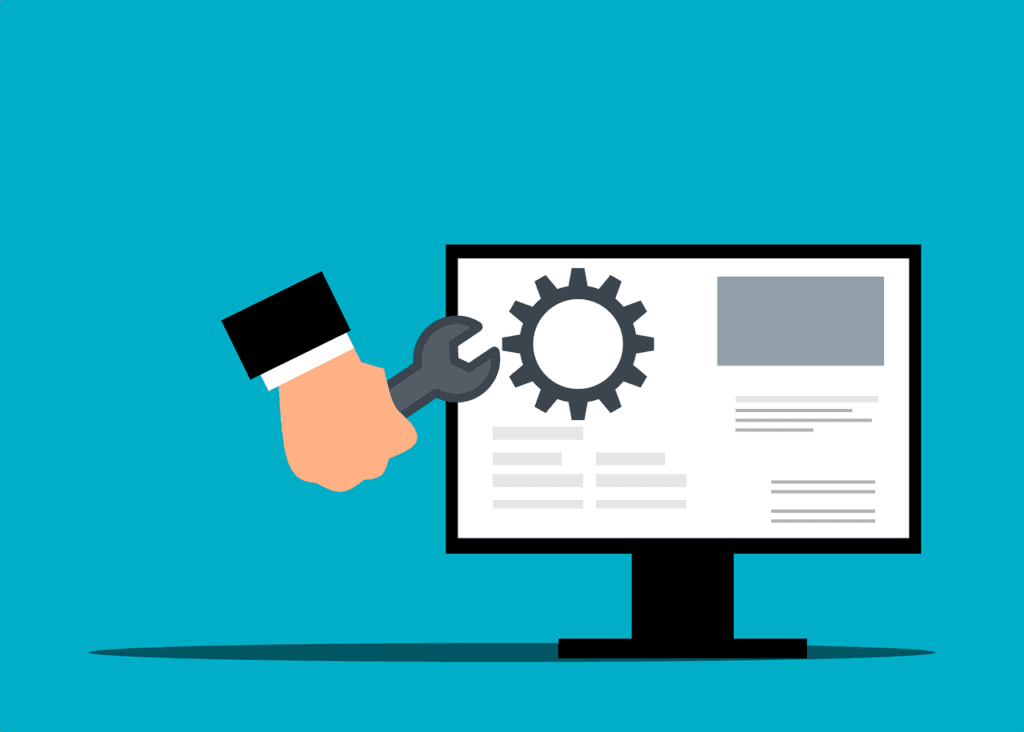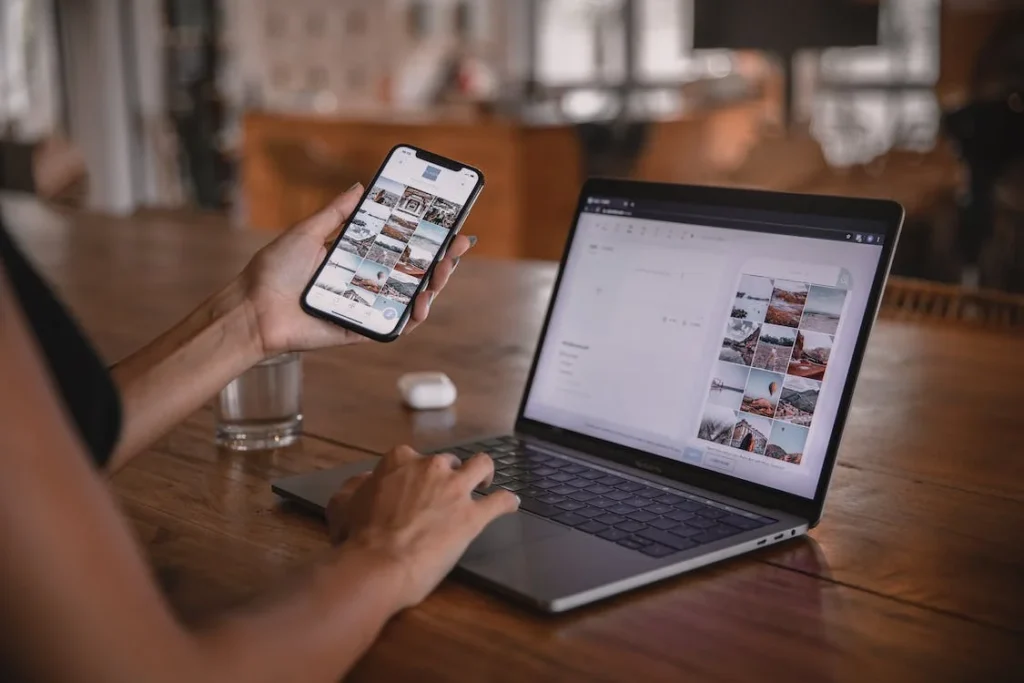This Article has been revised, edited and added to, by Poulomi Chakraborty.
- Understanding the Tech-Savvy Audience
- Profiling the Tech Enthusiast
- Emphasizing Authenticity and Transparency
- Tailoring Content to Address Pain Points
- Engaging Through Technical Depth
- Building a Community of Innovation
- Leveraging Data to Personalize Experiences
- Encouraging Interactive and Collaborative Content
- Adapting to Feedback and Evolving Needs
- Highlighting Real-World Applications
- Developing a Tactical Approach to Influencer Partnerships
- The Art of the Deal
- Setting Clear Expectations
- Identifying the Right Influencers
- Building Mutually Beneficial Relationships
- Crafting Comprehensive Briefs
- Integrating Influencers into Product Development
- Developing Long-Term Partnerships
- Leveraging Multiple Content Formats
- Monitoring and Measuring Impact
- Encouraging Authentic Storytelling
- Enhancing Collaborations with Co-Creation
- Adapting to Changing Dynamics
- Leveraging Content to Demonstrate Tech Expertise
- In-Depth Product Reviews and Demos
- Educational Content
- User-Generated Content and Community Engagement
- Crafting Detailed Technical Reviews
- Creating Step-by-Step Tutorials
- Showcasing Real-World Applications
- Engaging in Deep Dives and Explainer Videos
- Highlighting Industry Trends and Innovations
- Incorporating Live Demonstrations and Webinars
- Utilizing User-Generated Content and Feedback
- Engaging in Collaborative Projects and Hackathons
- Developing an Integrated Content Strategy
- Measuring Content Effectiveness
- Choosing the Right Platforms for Tech Content
- Crafting a Content Distribution Strategy
- Exclusive Launches and Teasers
- Cross-Promotion Across Channels
- Email Marketing Integration
- Paid Advertising to Amplify Reach
- Maximizing Reach Through Multi-Channel Distribution
- Utilizing Influencer Networks and Communities
- Capitalizing on SEO and Organic Reach
- Engaging Through Email Marketing Campaigns
- Amplifying Content with Paid Advertising
- Leveraging Video Platforms and Livestreams
- Creating Evergreen Content for Long-Term Impact
- Integrating Social Media Strategies
- Collaborating with Industry Publications
- Monitoring and Analyzing Distribution Performance
- Encouraging Audience Participation and Sharing
- Measuring Success: The Analytics of Influencer Marketing
- Setting KPIs and Goals
- Tracking Tools and Software
- Regular Reporting and Analysis
- Defining Clear Objectives and KPIs
- Leveraging Advanced Analytics Tools
- Tracking Engagement Metrics
- Evaluating Conversion and Sales Data
- Conducting Sentiment Analysis
- Implementing A/B Testing
- Measuring Long-Term Impact
- Aligning with Business Objectives
- Adjusting Strategies Based on Insights
- Reporting and Communicating Results
- Sustaining a Dynamic Influencer Marketing Program
- Building Long-Term Relationships
- Continuous Industry Monitoring
- Innovating with Influencer Content
- Building Long-Term Relationships with Influencers
- Encouraging Continuous Learning and Adaptation
- Leveraging Influencer Feedback for Improvement
- Innovating Content Formats and Strategies
- Implementing Data-Driven Decision Making
- Cultivating a Community Around Your Brand
- Adapting to Technological Advancements
- Maintaining Transparency and Trust
- Evaluating and Refining Your Strategy
- Conclusion
In an era where technology evolves at breakneck speed, tech brands face the ongoing challenge of connecting with consumers who are as knowledgeable as they are passionate. Influencer marketing has emerged as a pivotal strategy for the tech industry, tapping into the power of trusted voices to sway public opinion and drive engagement. But what does it take to successfully implement this approach in a landscape where credibility and expertise are paramount?
This guide is designed to demystify the world of influencer marketing for tech enthusiasts, offering actionable strategies, insider tips, and a step-by-step approach to fostering meaningful collaborations with influencers.
Understanding the Tech-Savvy Audience

Before diving into the nuts and bolts of influencer marketing, it’s crucial to understand the audience you’re trying to reach: tech enthusiasts. They are a discerning bunch, with a keen eye for innovation and a low tolerance for anything that feels disingenuous or overly salesy.
To win them over, your strategy must be grounded in authenticity and value. Tech aficionados seek information they can trust, recommendations from voices they respect, and content that speaks to their intelligence without underestimating their knowledge.
Profiling the Tech Enthusiast
Tech enthusiasts are often early adopters who are passionate about the latest advancements in technology. They are highly knowledgeable, frequently participating in online forums, following tech news, and engaging with other tech-savvy individuals.
For startup founders, this means crafting messages that acknowledge and respect their expertise. Instead of basic introductions, delve into the nuances of your product’s features and potential impact on the market. Highlight what sets your product apart from competitors and offer in-depth insights that cater to their thirst for knowledge.
Emphasizing Authenticity and Transparency
Authenticity is paramount when engaging with tech enthusiasts. They can easily spot insincerity and are quick to dismiss brands that appear overly promotional. Ensure that your influencer collaborations are genuine and transparent. Partner with influencers who have a proven track record of honesty and credibility in their reviews.
It’s important that influencers disclose their partnerships clearly to maintain trust. Sharing behind-the-scenes content, product development stories, and honest feedback can resonate well with this audience, enhancing your brand’s credibility.
Tailoring Content to Address Pain Points
Understanding the specific pain points and interests of tech enthusiasts can significantly enhance your content strategy. This audience is often looking for solutions to complex problems, seeking efficiency, and craving innovation. Develop content that addresses these needs directly.
For example, if your product solves a common issue in the tech world, focus on creating detailed case studies or tutorials that showcase its effectiveness. This approach not only demonstrates your product’s value but also positions your brand as a problem-solver and innovator.
Engaging Through Technical Depth
Tech enthusiasts appreciate content that dives deep into technical specifications and functionalities. Shallow content can quickly lose their interest. Work with influencers to create detailed reviews, in-depth tutorials, and comprehensive comparisons with other products in the market.
Encourage influencers to explore all facets of your product, from unboxing and setup to advanced features and long-term usability. This level of detail not only satisfies their curiosity but also helps them make informed purchasing decisions.
Building a Community of Innovation
Creating a community around your brand where tech enthusiasts can interact, share ideas, and provide feedback can foster a deeper connection. Utilize social media platforms, forums, and online communities to engage with your audience actively.
Encourage discussions about industry trends, future developments, and your product’s role in these conversations. By positioning your brand as a hub for innovation and knowledge exchange, you attract a loyal following that feels invested in your success.
Leveraging Data to Personalize Experiences
Utilizing data analytics to understand your audience’s behavior and preferences can provide valuable insights for personalizing their experiences. Track engagement metrics to identify which types of content resonate most with your audience.
Use this data to tailor future campaigns, ensuring that they are aligned with the interests and needs of tech enthusiasts. Personalized email campaigns, targeted social media ads, and customized content recommendations can significantly enhance engagement and conversion rates.
Encouraging Interactive and Collaborative Content
Interactive content can be particularly effective in engaging tech enthusiasts. Consider hosting live Q&A sessions, webinars, or interactive demos where the audience can ask questions and interact with influencers and brand representatives in real-time.
Collaborative content creation, such as crowd-sourced reviews or user-generated content campaigns, can also drive higher engagement. By involving your audience in the content creation process, you make them feel valued and part of your brand’s journey.
Adapting to Feedback and Evolving Needs
The tech industry is constantly evolving, and so are the needs and preferences of tech enthusiasts. Stay attuned to feedback from your audience and be willing to adapt your strategies accordingly. Regularly solicit feedback through surveys, social media interactions, and direct communication.
Use this feedback to refine your products, improve your content strategy, and enhance your influencer collaborations. Demonstrating that you listen to and act on feedback can significantly strengthen your relationship with your audience.
Highlighting Real-World Applications
Tech enthusiasts are not only interested in technical specifications but also in how products can be applied in real-world scenarios. Work with influencers to showcase practical applications of your product, whether through use-case demonstrations, project integrations, or customer success stories. Highlighting real-world benefits and applications helps your audience understand the tangible impact of your product and its relevance to their lives and work.
Developing a Tactical Approach to Influencer Partnerships

When it comes to influencer collaborations in the tech industry, the standard rules of influencer marketing apply—but they come with a high-tech twist. The products and services are often complex, and the audiences are discerning and highly informed. Your approach needs to reflect this reality.
The Art of the Deal
Negotiating with influencers is delicate in any industry, but in the tech world, you’re often asking for more than just a shoutout. You might need in-depth reviews, tutorials, or walkthroughs, which require more time and understanding of the product.
Be ready to offer fair compensation for their effort, and consider providing them access to exclusive information or events that can enrich their content and appeal to their audience.
Setting Clear Expectations
It’s essential to set clear expectations regarding the content that will be created. Influencers value their creative freedom, especially tech influencers who pride themselves on their unique voice and perspective. However, you also need to ensure that the content meets your brand’s goals.
Establish a balance between guiding the content and giving influencers the creative space to be genuine. Set benchmarks and timelines, but also be open to their input on how best to present your product to their audience.
Identifying the Right Influencers
Finding the right influencers is critical to the success of your campaign. Look for influencers who have a strong following among your target audience and who regularly engage with tech content. Evaluate their past collaborations, the quality of their content, and the level of engagement they generate.
It’s essential to partner with influencers who not only have reach but also credibility and authenticity in the tech community. Use data analytics tools to assess their influence, audience demographics, and engagement metrics to ensure they align with your brand’s goals.
Building Mutually Beneficial Relationships
Successful influencer partnerships are built on mutual benefit and respect. Approach influencers with a clear value proposition, showing how the collaboration will benefit them as much as it benefits your brand.
Offer exclusive access to new products, behind-the-scenes looks at your company, or opportunities to be part of exciting projects and innovations. Demonstrating that you value their contribution and are invested in a long-term relationship can foster greater commitment and enthusiasm from the influencers.
Crafting Comprehensive Briefs
To ensure that your influencers effectively communicate your brand’s message, provide them with comprehensive briefs. These should include detailed information about the product, key messages, target audience insights, and campaign objectives. However, it’s also crucial to respect the influencer’s creative process.
Allow them the flexibility to present your product in a way that resonates with their audience while ensuring that the core messages are conveyed accurately. A well-crafted brief balances guidance with creative freedom.
Integrating Influencers into Product Development
Consider integrating influencers into the product development process. This can be particularly effective in the tech industry, where influencers often have valuable insights into what tech enthusiasts want.
Involving influencers early on not only generates excitement and anticipation for the product but also ensures that the final product aligns well with market expectations. Influencers who have had a hand in shaping the product are likely to be more passionate and authentic in their endorsements.
Developing Long-Term Partnerships
Long-term partnerships with influencers can yield more substantial and consistent results compared to one-off campaigns. These relationships allow influencers to develop a deeper understanding of your brand and products, resulting in more authentic and compelling content.
Long-term collaborations also build trust with their audience, as repeated endorsements from a trusted voice can significantly impact purchasing decisions. Structure these partnerships to include regular content, exclusive previews, and ongoing engagement opportunities.
Leveraging Multiple Content Formats
Diversify the types of content that influencers create to maximize reach and engagement. Encourage them to produce a mix of content formats such as in-depth reviews, unboxing videos, tutorials, live demos, and Q&A sessions.
Each format has unique strengths: detailed reviews and tutorials provide thorough information, while live demos and Q&A sessions offer real-time interaction and engagement. By leveraging multiple content formats, you can cater to different preferences within your target audience and enhance the overall impact of your campaign.
Monitoring and Measuring Impact
Establish a robust framework for monitoring and measuring the impact of your influencer partnerships. Use tracking tools to monitor engagement metrics, conversion rates, and overall ROI. Set clear KPIs from the outset and regularly review performance data to assess the effectiveness of the collaboration.
This data-driven approach allows you to make informed decisions, optimize future campaigns, and demonstrate the value of influencer marketing to stakeholders. Ensure that both quantitative and qualitative metrics are considered, including audience sentiment and feedback.
Encouraging Authentic Storytelling
Encourage influencers to tell authentic stories about their experiences with your products. Authenticity resonates deeply with tech enthusiasts, who value genuine insights and honest reviews. Influencers should share their personal journeys, including both positive experiences and constructive criticism.
This approach not only builds credibility but also fosters trust and transparency. Authentic storytelling can transform promotional content into relatable narratives that engage and inspire the audience.
Enhancing Collaborations with Co-Creation
Take your influencer partnerships a step further by engaging in co-creation initiatives. Collaborate with influencers to develop unique content or even co-branded products. Co-creation allows influencers to have a more significant role in the campaign, leveraging their creativity and insights to produce innovative and engaging content.
This collaborative approach not only enhances the quality of the content but also deepens the relationship between the brand and the influencer, resulting in more enthusiastic and committed endorsements.
Adapting to Changing Dynamics
The tech industry is fast-paced, and influencer marketing strategies must be adaptable to changing dynamics. Stay informed about the latest trends, emerging platforms, and shifting consumer behaviors. Be prepared to adjust your strategies and explore new opportunities for collaboration.
Flexibility and agility are crucial for maintaining the relevance and effectiveness of your influencer marketing efforts in a constantly evolving landscape.
Leveraging Content to Demonstrate Tech Expertise

Content is the currency of the tech industry, and it’s what will ultimately attract and retain a dedicated following. But what kind of content should you encourage influencers to create?
In-Depth Product Reviews and Demos
In-depth reviews and demonstrations resonate well with tech audiences. They showcase the product’s features and utility, providing valuable information that tech enthusiasts crave.
Encourage influencers to go beyond surface-level reviews and dive deep into how the technology works, its benefits, and its potential drawbacks. Authenticity is crucial—audiences can tell when an influencer truly understands and appreciates the tech they’re showcasing.
Educational Content
Whether it’s a tutorial, a tech hack, or a deep dive into a particular technology, educational content positions both the influencer and your brand as thought leaders in the space.
Tech influencers can break down complex topics and make them accessible to their audience, which can be incredibly valuable for brands that sell products or services that require a bit of explanation.
User-Generated Content and Community Engagement
Encourage influencers to prompt their audience to share their own experiences with your product. This not only provides social proof but also engages the community in a conversation, making the influencer’s platform a hub for discussion about your brand.
This type of content can include challenges, Q&A sessions, or community projects that leverage your technology in innovative ways.
Crafting Detailed Technical Reviews
In-depth technical reviews are crucial for showcasing your product’s capabilities and distinguishing it from competitors. Encourage influencers to provide comprehensive analyses that cover all aspects of your product, from hardware specifications to software performance.
These reviews should highlight both strengths and potential areas for improvement, offering a balanced perspective that builds trust with the audience. Detailed comparisons with other products in the market can also help position your offering as superior and innovative.
Creating Step-by-Step Tutorials
Tutorials are invaluable for demonstrating the practical applications of your tech products. Partner with influencers to develop step-by-step guides that show users how to set up, optimize, and make the most out of your product.
These tutorials can address common pain points and provide solutions that enhance the user experience. By empowering users with knowledge, you not only improve customer satisfaction but also position your brand as a helpful and reliable resource in the tech community.
Showcasing Real-World Applications
Illustrate how your product can be used in real-world scenarios to solve specific problems or enhance productivity. Work with influencers to create content that highlights case studies or user stories demonstrating the tangible benefits of your technology.
This approach helps potential customers envision how the product can fit into their lives or businesses, making the value proposition more relatable and compelling. Real-world applications also provide context, making complex technology more accessible and understandable.
Engaging in Deep Dives and Explainer Videos
Explainer videos and deep dives into specific features or technologies are highly effective in engaging tech-savvy audiences. These videos should break down complex concepts into easily digestible information, providing viewers with a thorough understanding of how your product works and its unique advantages.
Utilize graphics, animations, and real-world demonstrations to make the content visually appealing and informative. This not only educates your audience but also establishes your brand as a thought leader in the tech space.
Highlighting Industry Trends and Innovations
Position your brand as an industry leader by creating content that discusses broader tech trends and innovations. Collaborate with influencers to produce thought leadership pieces that analyze the impact of emerging technologies, market shifts, and future trends.
This content not only demonstrates your brand’s expertise but also keeps your audience informed and engaged with the latest developments in the tech industry. Regularly publishing trend analysis and expert opinions can enhance your brand’s reputation and credibility.
Incorporating Live Demonstrations and Webinars
Live demonstrations and webinars offer interactive opportunities to showcase your product’s capabilities and engage with your audience in real-time. Partner with influencers to host live sessions where they can demonstrate key features, answer questions, and provide insights into the product’s use.
This format allows for direct interaction with potential customers, addressing their concerns and building trust. Webinars can also be recorded and repurposed as on-demand content, extending their reach and impact.
Utilizing User-Generated Content and Feedback
Encourage influencers to gather and share user-generated content and feedback. This can include reviews, testimonials, and user experiences with your product. User-generated content provides social proof and adds authenticity to your marketing efforts.
Highlighting positive feedback and real-world success stories can significantly boost credibility and influence purchasing decisions. Additionally, leveraging user feedback to make product improvements shows that your brand values customer input and is committed to continuous improvement.
Engaging in Collaborative Projects and Hackathons
Collaborative projects and hackathons can showcase your product’s versatility and foster innovation. Work with influencers to organize or participate in hackathons where developers and tech enthusiasts can create new applications or solutions using your technology.
Document and share the outcomes of these events to highlight the potential and flexibility of your product. Collaborative projects not only generate valuable content but also build a community around your brand, encouraging engagement and loyalty.
Developing an Integrated Content Strategy
For maximum impact, develop an integrated content strategy that combines various content types and distribution channels. Coordinate with influencers to create a cohesive narrative that spans across different platforms, including blogs, social media, video platforms, and industry forums.
This integrated approach ensures consistent messaging and broadens your reach, making it easier for potential customers to discover and engage with your content. Regularly update and refresh your content strategy to keep it aligned with audience interests and industry trends.
Measuring Content Effectiveness
To ensure your content strategy is effective, establish clear metrics for success and regularly analyze performance data. Track engagement rates, conversion metrics, and audience feedback to assess the impact of your content.
Use these insights to refine your strategy, focusing on content types and topics that resonate most with your audience. Continuous evaluation and optimization help maintain the relevance and effectiveness of your content, driving sustained engagement and growth.
Choosing the Right Platforms for Tech Content
Not all social media platforms are created equal, especially when it comes to technology-focused content. The platform you choose can significantly impact the effectiveness of your influencer marketing campaigns.

Related: Check out our free SEO suite

YouTube: The Tech Reviewer’s Stage
YouTube reigns supreme when it comes to in-depth tech reviews and demonstrations. The video format allows for detailed explanations, visuals of products in action, and the ability to convey the influencer’s genuine reactions to tech products.
When partnering with YouTubers, consider long-form content that allows them to fully explore and discuss your product’s features.
Twitter: The Pulse of Tech Discussions
Twitter is where many tech conversations happen—from the latest industry news to tech support threads. It’s a great place for sharing quick updates, engaging in discussions, and driving traffic to more detailed content.
Influencers on Twitter can be encouraged to share their thoughts on your products, engage with their followers about tech trends, and direct followers to more substantial content on other platforms.
LinkedIn: The Professional’s Network
For B2B tech products or services, LinkedIn can be an invaluable platform. It’s where professionals seek industry insights, network, and look for tools that can help them succeed in their careers.
Tech influencers on LinkedIn can offer a more professional perspective, share case studies, or discuss the impact of your product on businesses.
Instagram and TikTok: Visual Storytelling and Quick Demos
While not as detail-oriented as YouTube, platforms like Instagram and TikTok are perfect for quick demos, eye-catching visuals of tech products, and short testimonials. They’re key for reaching a younger demographic that values quick, digestible content.
Crafting a Content Distribution Strategy

Once you’ve created content with influencers, the next step is to ensure it reaches the right audience. Here’s how to distribute content effectively:
Exclusive Launches and Teasers
Generate buzz by having influencers share teasers or exclusive previews of upcoming tech products. This can build anticipation and create a sense of exclusivity around your brand.
Cross-Promotion Across Channels
Maximize reach by cross-promoting content across different channels. If an influencer posts a detailed review on YouTube, share snippets or highlights on Twitter, Instagram, or LinkedIn to drive traffic to the full video.
Email Marketing Integration
Don’t forget the power of email marketing. Share influencer content in your newsletters or promotional emails. It gives the content an additional layer of credibility when it comes directly from the brand alongside the influencer’s endorsement.
Paid Advertising to Amplify Reach
Consider using paid advertising to further amplify influencer content. Platforms like Facebook and Instagram allow you to promote influencer posts, which can help extend the reach beyond their existing follower base.
Maximizing Reach Through Multi-Channel Distribution
To effectively distribute your influencer content, adopt a multi-channel approach that leverages various platforms to maximize reach and engagement. Each platform has unique strengths and caters to different segments of your audience. By diversifying your distribution channels, you can ensure that your content is seen by a broader and more targeted audience.
Utilizing Influencer Networks and Communities
Influencers often have established networks and communities that trust their recommendations. Leverage these networks by encouraging influencers to share content across their social media platforms, blogs, and newsletters.
This amplifies your reach and taps into an already engaged audience. Engage with the community through comments and discussions to build relationships and further extend your brand’s presence.
Capitalizing on SEO and Organic Reach
Optimize your content for search engines to enhance its visibility and discoverability. Use relevant keywords, meta descriptions, and tags to ensure your content ranks well in search results.
Collaborate with influencers to create blog posts, videos, and articles that incorporate these SEO elements. High-quality, optimized content can attract organic traffic long after the initial publication, providing sustained visibility and engagement.
Engaging Through Email Marketing Campaigns
Email marketing remains a powerful tool for content distribution. Integrate influencer content into your email newsletters and targeted email campaigns. Highlight exclusive insights, reviews, and tutorials from influencers to provide value to your subscribers.
Segment your email list to tailor content to specific audience groups, ensuring relevance and personalization. Email marketing not only drives traffic but also nurtures leads and builds stronger relationships with your audience.
Amplifying Content with Paid Advertising
Enhance the reach of your influencer content through paid advertising campaigns. Use platforms like Facebook, Instagram, and Google Ads to promote influencer posts to a wider audience.
Target ads based on demographics, interests, and behaviors to reach potential customers who are most likely to engage with your content. Paid advertising can significantly boost visibility, drive traffic, and increase conversions when strategically executed.
Leveraging Video Platforms and Livestreams
Video platforms such as YouTube and live streaming services like Twitch are ideal for distributing in-depth reviews, tutorials, and demonstrations. Partner with influencers to create engaging video content that showcases your product’s features and benefits.
Promote these videos across social media channels and embed them on your website for maximum exposure. Live streams provide real-time interaction opportunities, allowing viewers to ask questions and receive immediate feedback.
Creating Evergreen Content for Long-Term Impact
Focus on creating evergreen content that remains relevant and valuable over time. Evergreen content continues to attract traffic and engagement long after its initial release. Collaborate with influencers to produce timeless pieces such as how-to guides, industry analysis, and comprehensive reviews.
Regularly update and repurpose this content to keep it fresh and aligned with current trends and developments in the tech industry.
Integrating Social Media Strategies
Social media platforms are essential for distributing influencer content and engaging with your audience. Develop a robust social media strategy that includes regular posting schedules, engaging visuals, and interactive content.
Use platforms like Twitter for real-time updates and discussions, LinkedIn for professional insights and B2B interactions, and Instagram for visually appealing posts and stories. Encourage influencers to participate in social media takeovers, Q&A sessions, and live events to boost engagement and visibility.
Collaborating with Industry Publications
Industry publications and tech blogs are valuable distribution channels for influencer content. Collaborate with these publications to feature guest posts, interviews, and product reviews from influencers.
This not only increases your reach but also enhances your brand’s credibility and authority in the tech industry. Being featured in reputable publications can attract a highly engaged and knowledgeable audience interested in tech innovations.
Monitoring and Analyzing Distribution Performance
To ensure the effectiveness of your content distribution strategy, continuously monitor and analyze performance metrics. Use analytics tools to track engagement, traffic, and conversion rates across different platforms. Identify which channels and content types perform best and refine your strategy accordingly.
Regular analysis helps you understand your audience’s preferences and optimize your distribution efforts for maximum impact.
Encouraging Audience Participation and Sharing
Encourage your audience to participate and share influencer content to expand its reach organically. Create interactive content that prompts engagement, such as polls, contests, and challenges. Encourage influencers to ask their followers to share their experiences and feedback. User-generated content not only increases visibility but also builds a sense of community and loyalty around your brand.
Measuring Success: The Analytics of Influencer Marketing

Influencer marketing is not just about creating buzz; it’s about generating results that align with your brand’s goals. Whether that’s boosting brand awareness, increasing website traffic, or driving sales, you need a way to measure the success of your campaigns.
Setting KPIs and Goals
Before launching an influencer campaign, define clear Key Performance Indicators (KPIs) and goals. For tech companies, common KPIs include engagement rates, conversion rates, click-through rates, and the number of quality leads generated.
Tracking Tools and Software
Leverage tracking tools and software to monitor the performance of influencer campaigns. Use unique URLs, promo codes, and UTM parameters to track the traffic and conversions that each influencer generates.
Regular Reporting and Analysis
Establish a routine for reporting and analyzing campaign performance. Look beyond vanity metrics like likes and followers; focus on engagement depth, quality of interactions, and conversions. Regular analysis helps you understand what’s working and what isn’t, so you can adjust your strategy accordingly.
Defining Clear Objectives and KPIs
The first step in measuring the success of your influencer marketing efforts is to define clear objectives and key performance indicators (KPIs). Establish specific goals such as increasing brand awareness, driving website traffic, generating leads, or boosting sales.
Align these objectives with measurable KPIs like engagement rates, click-through rates, conversion rates, and return on investment (ROI). Having clearly defined goals and metrics allows you to track progress and determine the effectiveness of your campaigns.
Leveraging Advanced Analytics Tools
To gain deep insights into your influencer marketing performance, utilize advanced analytics tools. Platforms like Google Analytics, social media insights, and specialized influencer marketing tools can provide detailed data on how your campaigns are performing.
These tools help you track metrics such as website traffic, referral sources, audience demographics, and behavior patterns. By leveraging advanced analytics, you can gain a comprehensive understanding of your campaign’s impact and identify areas for improvement.
Tracking Engagement Metrics
Engagement metrics are crucial for assessing how well your content resonates with the audience. Monitor metrics such as likes, comments, shares, and video views to gauge audience interaction. High engagement indicates that your content is effective in capturing attention and encouraging interaction.
Additionally, analyze the quality of engagement by looking at the depth of comments and the nature of interactions. Meaningful engagement suggests that your content is not only being seen but also generating genuine interest and conversations.
Evaluating Conversion and Sales Data
Ultimately, the success of your influencer marketing efforts should be measured by their impact on conversions and sales. Use tracking links, promo codes, and UTM parameters to attribute sales and leads directly to specific influencers and campaigns.
Analyze conversion rates to determine how many interactions result in actual purchases or sign-ups. Evaluating sales data helps you understand the direct financial impact of your influencer marketing efforts and identify the most effective influencers and strategies.
Conducting Sentiment Analysis
Beyond quantitative metrics, qualitative data such as sentiment analysis can provide valuable insights into how your brand is perceived. Use sentiment analysis tools to assess the tone and emotions expressed in comments, reviews, and social media mentions.
Positive sentiment indicates strong brand affinity and successful influencer endorsements, while negative sentiment can highlight areas for improvement. Understanding audience sentiment helps you refine your messaging and improve overall brand perception.
Implementing A/B Testing
A/B testing allows you to experiment with different content, messaging, and strategies to determine what works best. Collaborate with influencers to test variations of content, such as different headlines, images, and calls to action.
Analyze the performance of each variation to identify the most effective elements. Implementing A/B testing provides actionable insights that can enhance the effectiveness of your future campaigns and optimize your marketing efforts.
Measuring Long-Term Impact
Influencer marketing campaigns often have long-term effects that extend beyond immediate metrics. Track the sustained impact of your campaigns by monitoring brand awareness, customer loyalty, and repeat purchases over time.
Assess how initial influencer endorsements influence long-term customer behavior and brand perception. Measuring long-term impact helps you understand the enduring value of influencer collaborations and the ongoing return on your marketing investment.
Aligning with Business Objectives
Ensure that your influencer marketing efforts align with broader business objectives and contribute to overall company goals. Regularly review how your influencer campaigns support key business initiatives, such as product launches, market expansion, or brand repositioning. By aligning influencer marketing with strategic business objectives, you can demonstrate its value as an integral part of your overall marketing strategy.
Adjusting Strategies Based on Insights
Continuous improvement is essential for maintaining the effectiveness of your influencer marketing efforts. Use insights gained from analytics to refine and adjust your strategies. Identify successful tactics and replicate them in future campaigns, while also addressing any shortcomings. Regularly updating your approach based on data-driven insights ensures that your influencer marketing remains relevant, effective, and aligned with evolving market trends.
Reporting and Communicating Results
Effective reporting and communication of results are crucial for demonstrating the value of your influencer marketing efforts to stakeholders. Develop comprehensive reports that highlight key metrics, insights, and the overall impact of your campaigns. Use visual aids such as graphs and charts to clearly convey performance data. Regularly communicate these results to internal teams and stakeholders to showcase the success of your influencer marketing initiatives and secure ongoing support.
Sustaining a Dynamic Influencer Marketing Program
Maintaining a successful influencer marketing strategy requires constant evolution and adaptation. As the tech industry rapidly changes, so too should your approach to influencer collaborations.
Building Long-Term Relationships
Focus on building long-term relationships with influencers. When influencers feel like a valued part of your brand, they’re more likely to provide authentic and enthusiastic endorsements, and their audience takes notice.
Continuous Industry Monitoring
Stay abreast of industry trends and shifts in consumer behavior. This will help you anticipate changes in the types of content and influencers that will be most effective for your brand.
Innovating with Influencer Content
Encourage influencers to experiment with new content formats, like live streams, Q&A sessions, and virtual reality experiences. Innovating with content keeps it fresh and interesting for tech-savvy audiences.
Building Long-Term Relationships with Influencers
Fostering long-term relationships with influencers is key to sustaining a dynamic influencer marketing program. Establishing strong, ongoing partnerships allows influencers to develop a deeper understanding of your brand and its products.
This familiarity leads to more authentic and compelling content that resonates with their audience. Invest time in building these relationships by regularly engaging with influencers, providing them with exclusive updates, and involving them in your product development process.
Long-term collaborations also build trust with their audience, making endorsements more credible and effective.
Encouraging Continuous Learning and Adaptation
The tech industry is characterized by rapid innovation and change. To stay ahead, encourage continuous learning and adaptation within your influencer marketing program. Keep abreast of the latest industry trends, emerging technologies, and shifts in consumer behavior.
Share these insights with your influencers to ensure their content remains relevant and up-to-date. Additionally, provide training and resources to help influencers stay informed about your products and the broader tech landscape.
This proactive approach ensures that your influencer marketing efforts are always aligned with current market dynamics.
Leveraging Influencer Feedback for Improvement
Influencers are not just partners but also valuable sources of feedback. Regularly solicit their input on your products, marketing strategies, and the overall collaboration process. Use this feedback to make informed improvements and adjustments to your influencer marketing program.
By actively listening to and acting on influencer feedback, you demonstrate a commitment to continuous improvement and create a more collaborative and productive partnership. This iterative process helps refine your approach and enhances the effectiveness of your campaigns.
Innovating Content Formats and Strategies
To keep your influencer marketing program dynamic, continually innovate with new content formats and strategies. Encourage influencers to experiment with different types of content, such as live streams, virtual reality experiences, interactive demos, and behind-the-scenes looks.
Innovation keeps the content fresh and engaging, capturing the interest of tech-savvy audiences. Additionally, explore new platforms and distribution channels to reach a broader audience. By embracing creativity and experimentation, you can stay ahead of the competition and maintain the interest of your target audience.
Implementing Data-Driven Decision Making
Data-driven decision making is crucial for sustaining a dynamic influencer marketing program. Regularly analyze performance metrics to gain insights into what works and what doesn’t. Use these insights to optimize your strategies and make informed decisions about future campaigns.
Implementing a robust analytics framework allows you to track key metrics such as engagement rates, conversion rates, and ROI. By leveraging data, you can continuously refine your approach and ensure that your influencer marketing efforts deliver the desired results.
Cultivating a Community Around Your Brand
Building a community around your brand enhances the effectiveness of your influencer marketing program. Engage with your audience through social media, forums, and other online platforms where tech enthusiasts gather. Create opportunities for interaction and discussion, such as Q&A sessions, webinars, and community events.
Encouraging influencers to participate in these activities can help foster a sense of community and loyalty among their followers. A strong community not only amplifies your reach but also provides valuable feedback and support for your brand.
Adapting to Technological Advancements
As technology evolves, so should your influencer marketing strategies. Stay informed about technological advancements that can enhance your influencer marketing efforts, such as artificial intelligence, machine learning, and automation tools.
These technologies can streamline processes, improve targeting, and provide deeper insights into campaign performance. Embrace new tools and platforms that can enhance the efficiency and effectiveness of your influencer marketing program. Adapting to technological advancements ensures that your strategies remain cutting-edge and competitive.
Maintaining Transparency and Trust
Transparency and trust are fundamental to the success of any influencer marketing program. Ensure that all collaborations are transparent, with clear disclosures about partnerships and sponsored content. This transparency builds trust with the audience and maintains the integrity of both the influencer and your brand.
Establish clear guidelines and expectations for influencers to follow, and maintain open lines of communication to address any concerns or issues that arise. By prioritizing transparency and trust, you can sustain long-term relationships with influencers and their audiences.
Evaluating and Refining Your Strategy
Regular evaluation and refinement of your influencer marketing strategy are essential for sustaining success. Conduct periodic reviews of your campaigns to assess their performance and identify areas for improvement.
Gather feedback from influencers, audience members, and internal stakeholders to gain a comprehensive understanding of what’s working and what’s not. Use this feedback to refine your strategies, adjust your goals, and implement new tactics. A continuous cycle of evaluation and refinement ensures that your influencer marketing program remains dynamic and effective.
Conclusion
In the fast-paced world of technology, influencer marketing is not just a tactic—it’s a strategic necessity that bridges the gap between brands and tech enthusiasts. By understanding the unique needs and preferences of this savvy audience, developing tactical influencer partnerships, leveraging content to demonstrate expertise, crafting effective content distribution strategies, and continuously measuring success, startups can harness the full potential of influencer marketing.
Maintaining a dynamic influencer marketing program requires ongoing adaptation and innovation, fostering long-term relationships with influencers, and staying attuned to industry trends and technological advancements. Transparency, authenticity, and engagement are key to building trust and fostering a loyal community around your brand.
For startup founders, the journey of influencer marketing in the tech industry is one of continuous learning and refinement. By prioritizing strategic planning and execution, you can effectively engage tech enthusiasts, drive meaningful results, and position your brand as a leader in the ever-evolving tech landscape. Embrace the power of influencer marketing to not only reach your target audience but to inspire and connect with them on a deeper level, ensuring sustained growth and success.
Read Next
- The Magic of Affiliate Marketing in Entertainment: A Curtain-Raiser
- The Role of Loyalty Programs in Boosting Affiliate Sales
- Affiliate Marketing for the Fitness Industry: Promoting Workouts and Health Supplements
- Affiliate Marketing for the Real Estate Sector: Promoting Properties and Services
- Affiliate Marketing in the Age of Ad Blockers: Overcoming Challenges and Staying Relevant






















Comments are closed.